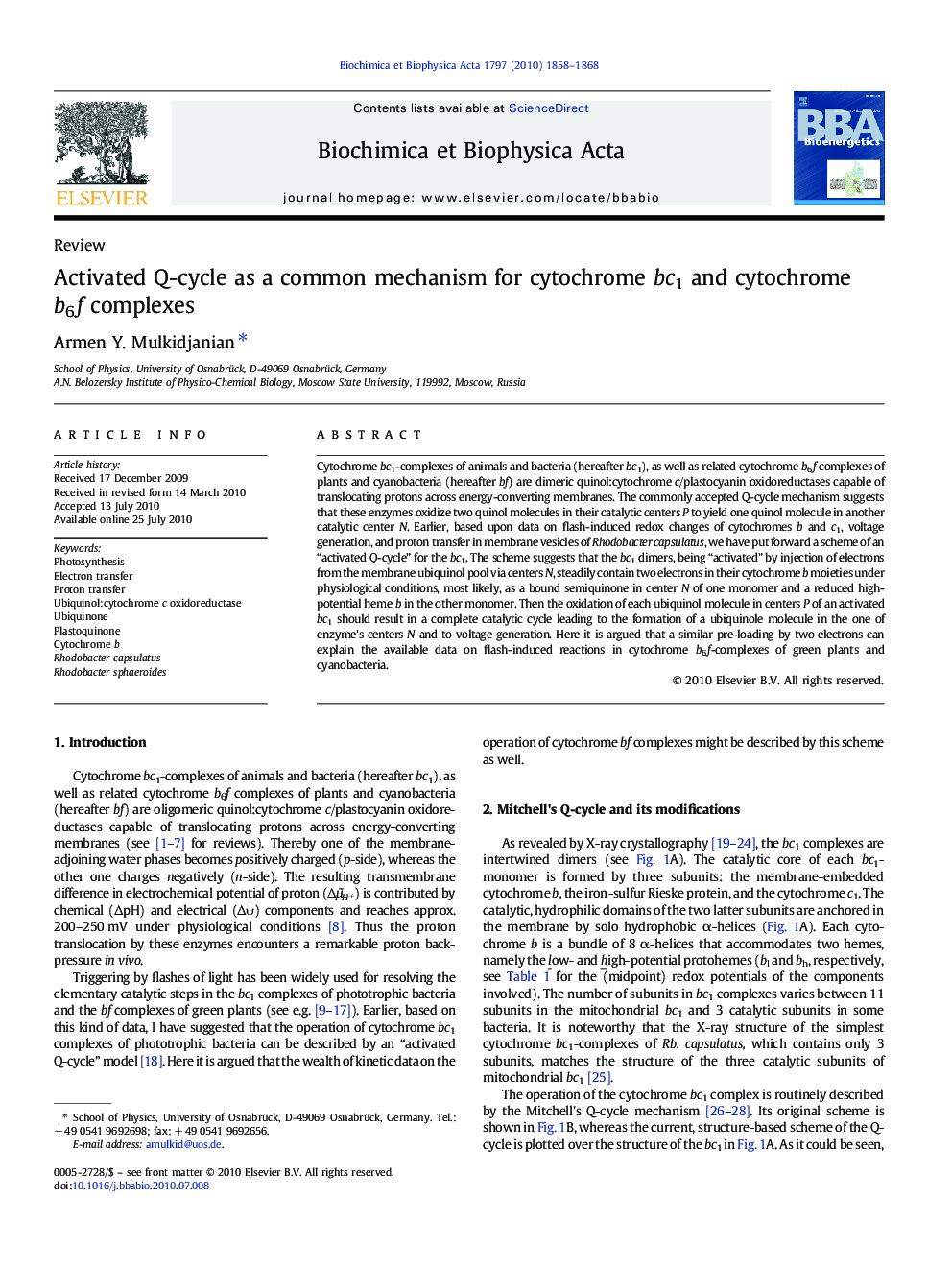| Article ID | Journal | Published Year | Pages | File Type |
|---|---|---|---|---|
| 1942858 | Biochimica et Biophysica Acta (BBA) - Bioenergetics | 2010 | 11 Pages |
Cytochrome bc1-complexes of animals and bacteria (hereafter bc1), as well as related cytochrome b6f complexes of plants and cyanobacteria (hereafter bf) are dimeric quinol:cytochrome c/plastocyanin oxidoreductases capable of translocating protons across energy-converting membranes. The commonly accepted Q-cycle mechanism suggests that these enzymes oxidize two quinol molecules in their catalytic centers P to yield one quinol molecule in another catalytic center N. Earlier, based upon data on flash-induced redox changes of cytochromes b and c1, voltage generation, and proton transfer in membrane vesicles of Rhodobacter capsulatus, we have put forward a scheme of an “activated Q-cycle” for the bc1. The scheme suggests that the bc1 dimers, being “activated” by injection of electrons from the membrane ubiquinol pool via centers N, steadily contain two electrons in their cytochrome b moieties under physiological conditions, most likely, as a bound semiquinone in center N of one monomer and a reduced high-potential heme b in the other monomer. Then the oxidation of each ubiquinol molecule in centers P of an activated bc1 should result in a complete catalytic cycle leading to the formation of a ubiquinole molecule in the one of enzyme's centers N and to voltage generation. Here it is argued that a similar pre-loading by two electrons can explain the available data on flash-induced reactions in cytochrome b6f-complexes of green plants and cyanobacteria.
